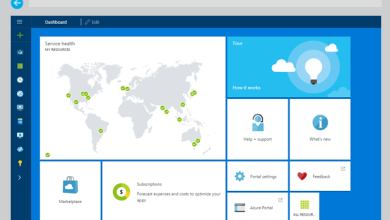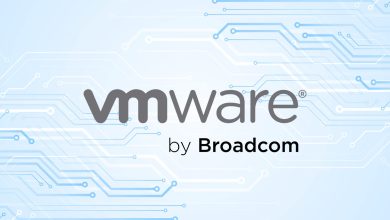How to Future-Proof a VoIP Phone System

Voice over Internet Protocol is a fast and easy way to upgrade your business’s communication stack to the cloud. As an internet-based solution, a VoIP phone system is more cost-effective than traditional systems that connect to the Public Switched Telephone Network.
But no two VoIP phone systems are the same. There are multiple deployment models, varying levels of complexity, and different pricing structures.
What’s the best way to futureproof your investment while keeping costs low? Let’s find out.
Get the least complicated VoIP phone system that works
Overall, a VoIP phone system is a lightweight, internet-based solution that can simplify your infrastructure while offering more flexibility in how you operate. With so many features to choose from, piecing together the right system can feel daunting, no matter how you approach it.
My best advice? Find the simplest solution that meets your needs.
To do that, you’ll first need to get crystal clear on your requirements. It may help to ask yourself the following questions:
- Which features are essential to your operation right now?
- What isn’t working with your current phone system?
- How many users will you have today and a year from now?
- What business tools do you need to integrate with?
- What industry regulations do you have to comply with?
- How important is customization?
- Are you looking for something for regular business use or a high-volume contact center environment?
Don’t overcomplicate your requirements. Doing so could result in you spending more money than you need to.
If you find a solution that offers most of the features you need but requires an upgrade for a couple of extra features, keep looking. There’s likely a different solution that offers a slightly different package.
While it’s important to consider what you’ll need later, it’s easy to get stuck thinking about all the possibilities.
Your needs a year from now should factor in, but don’t let it keep you from moving forward.
Tips for buying any type of VoIP phone system
There are different types of systems and unique deployment types. The best tips for you depend on the type of VoIP system you’re considering.
Simple plug-and-play voice-only systems
Your business probably already has the main component for this cloud-based solution: an internet connection.
Setting up your new system could be as simple as configuring a few additional routers to enable wider coverage. You may also need adapters if your existing phones aren’t IP-enabled. But that’s really about it.
One of the greatest benefits of plug-and-play is that you don’t have to deal with the cost or hassle of replacing hardware. It’s designed to complement your current setup for a simple, streamlined switch from landline to internet — ideal for new businesses or smaller operations with very little existing infrastructure.
If you need to buy phones, it’s easiest to get them through your VoIP provider. They’ll come preconfigured and all you’ll have to do is plug them in.
However, you can save money by going with refurbished phones. If you do, make sure to consider compatibility, brand, and manufacturer.
The cheapest option, though, is foregoing phones altogether. Your team can use their mobile devices and computers for everything.
One of the biggest issues with these types of systems is long-term scalability. While you can easily add or remove users as you need to, you may eventually need more powerful analytics, call routing options, and automation capabilities. But it’s hard to beat the ease and simplicity of a no-frills VoIP system.
SEE: Check out the best VoIP phone systems for small businesses.
Infinitely scalable cloud-based communication platforms
Cloud-based communications platforms are also fairly plug and play. Your provider manages all the software and hardware behind the scenes on your behalf. And your team can handle calls using existing phones, mobile devices, or a desktop.
But unlike a simple VoIP system, these offer a wealth of features, additional communication channels, plans to choose from, and unlimited scalability.
You can start with an entry-level plan and upgrade to higher tiers as your needs change — this is the best way to save money with this type of system.
Many also offer highly customizable contact center solutions for managing incoming and outgoing calls at scale. In other words, there’s plenty of room to grow.
They also usually offer text messaging, videoconferencing, team chat, file sharing, and online faxing (this is called UCaaS). You can get just about every channel you’ll need for internal collaboration and external communication
The most significant disadvantages are complexity, cost, and flexibility.
These systems do a lot more, therefore they tend to be harder to set up, more challenging to learn, and more expensive. On top of that, you’ll lose all of your communication channels if you ever decide you want to move to a different phone system.
Highly customizable on-premises VoIP phone systems
An on-premises VoIP system is a solution that involves an onsite server that you manage rather than your provider handling the backend for you.
Some business owners prefer this approach, as it gives you complete control over your system structure, security, and configuration.
SEE: Learn about the most important VoIP security best practices.
Aspects like SIP trunk setup, adding or removing users, and updating system security features are all in your hands. The VoIP provider simply extends internet-based phone network capabilities to your existing framework.
However, this solution will likely have a major upfront investment. You’ll have to buy servers, employ staff to manage them, and pay for software licenses.
You may also have higher electric bills, and have to purchase additional software to maintain your servers.
However, ongoing costs for the VoIP software itself can be far cheaper than the types of systems we’ve covered so far.
You can take measures to support the longevity of your on-premises system by investing in high-quality hardware and a strong support team. You’ll want a dedicated IT staff available to manage the system, coordinate additional features, and stay on top of the most up-to-date security practices.
Hybrid phone systems
If you have a landline phone system and long-term contracts with various providers you can’t get out of, a hybrid approach means some of your team uses that and others use VoIP.
You’ll maintain the stability and reliability of your existing system while enjoying lower costs for your VoIP users, better scalability, and additional VoIP features you wouldn’t have otherwise.
It’s also a great way to gradually transition to internet-based communications. You can spread migration costs out over time, rather than upgrading your entire system to VoIP at once.
Plus you get full control in deciding which teams use VoIP and which use traditional lines.
Teams that do a lot of long-distance or international calling are likely your best candidates for switching over to VoIP. Most VoIP plans include unlimited domestic calling and some offer unlimited international calling upgrades. That alone will likely save you money right away.
Those savings will multiply for large businesses with hundreds or thousands of users.
Virtual call center solutions
If you only have one or two sales or customer service representatives, you’re probably fine using a typical phone system.
But large teams managing high call volume often need more advanced features. Thankfully, they can leverage VoIP functionality through call and contact center software.
Just like a regular system, virtual call center software can be fully managed by your provider, deployed on a cloud server you own, or on a physical server in your office.
These are the most complex systems, including a range of features to:
- Route callers to the right place.
- Assist supervisors in monitoring performance.
- Sync critical customer data.
- Monitor compliance and process adherence.
- Communicate via messaging apps and social media.
- Deliver exceptional customer experiences.
- Automate repetitive tasks.
- Keep agents engaged.
- Maintain consistency.
The best way to save money is choosing a system that integrates with your CRM software, includes all the basic functionality you need, and gives you plenty of room to grow.
It’s easy to get distracted by advanced call center capabilities, but it’s important to consider what you actually need vs what’s nice to have.
VoIP phone systems vs SIP trunking
SIP trunking is only an option if you’re currently using a landline system or have a Private Branch Exchange laying around.
Similar to a hybrid VoIP system, it’s a cost-effective way to transition to internet-based communications without getting rid of your existing infrastructure.
However, SIP trunking works on top of your system rather than replacing it.
Landlines require copper wires going to the phone provider. It’s expensive to maintain these. On top of that, the longer your recipient is from your physical location, the more work is required to connect you. Hence, you have to pay more for long-distance calls.
With SIP trunking, you replace those copper wires with virtual lines over the internet. Right away, long-distance calls are a thing of the past.
You’ll also see significant cost savings because SIP trunking services are priced per channel (also called a trunk). Each channel can handle one call at a time, so you’ll need 15 channels to support 15 simultaneous calls.
VoIP systems, on the other hand, charge per user. You need far fewer channels than you have users, giving you an immediate cost reduction.
Because most SIP trunking providers set everything up remotely, it only takes a few hours to a day to implement.




